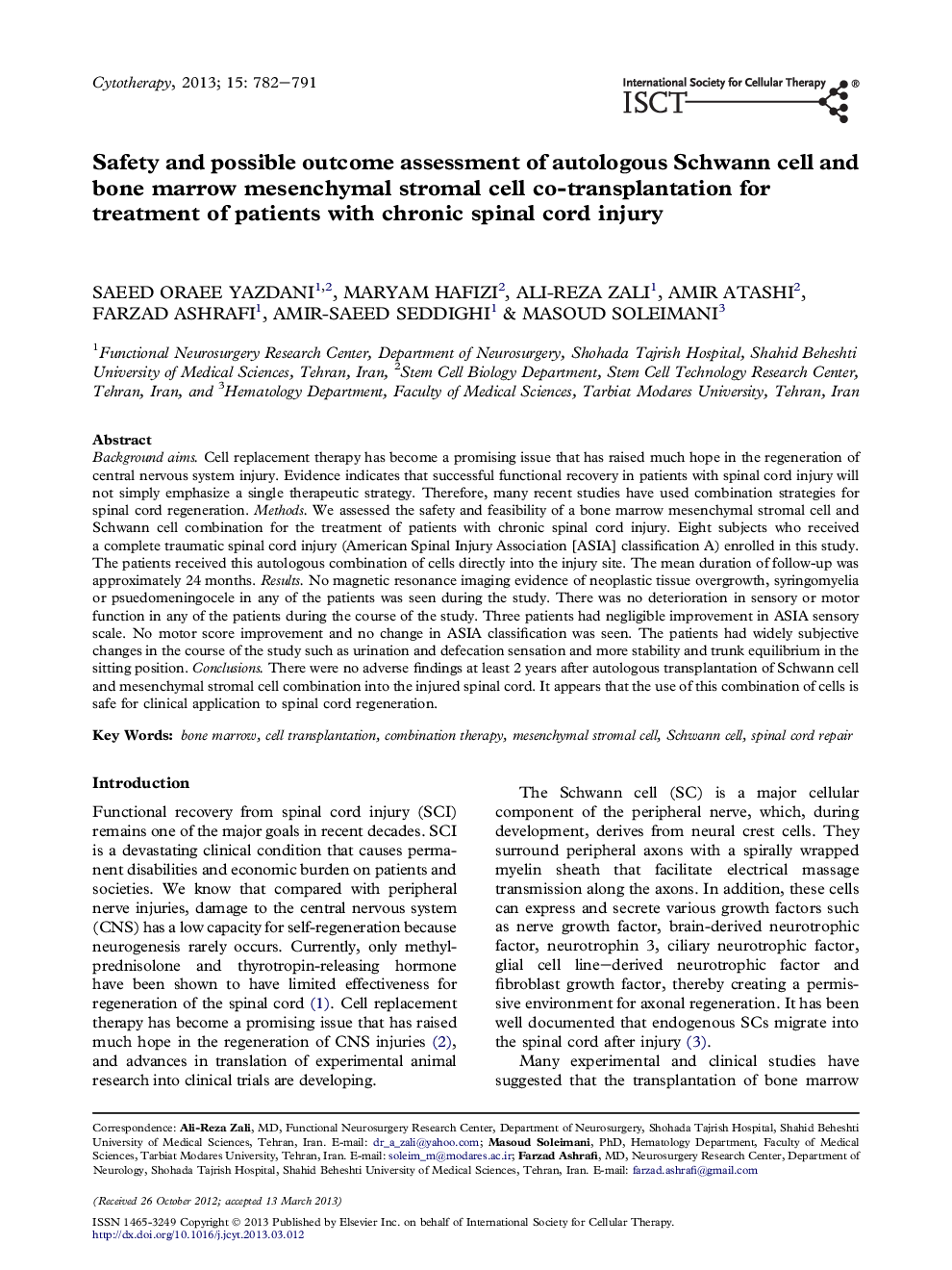| Article ID | Journal | Published Year | Pages | File Type |
|---|---|---|---|---|
| 2171358 | Cytotherapy | 2013 | 10 Pages |
Background aimsCell replacement therapy has become a promising issue that has raised much hope in the regeneration of central nervous system injury. Evidence indicates that successful functional recovery in patients with spinal cord injury will not simply emphasize a single therapeutic strategy. Therefore, many recent studies have used combination strategies for spinal cord regeneration.MethodsWe assessed the safety and feasibility of a bone marrow mesenchymal stromal cell and Schwann cell combination for the treatment of patients with chronic spinal cord injury. Eight subjects who received a complete traumatic spinal cord injury (American Spinal Injury Association [ASIA] classification A) enrolled in this study. The patients received this autologous combination of cells directly into the injury site. The mean duration of follow-up was approximately 24 months.ResultsNo magnetic resonance imaging evidence of neoplastic tissue overgrowth, syringomyelia or psuedomeningocele in any of the patients was seen during the study. There was no deterioration in sensory or motor function in any of the patients during the course of the study. Three patients had negligible improvement in ASIA sensory scale. No motor score improvement and no change in ASIA classification was seen. The patients had widely subjective changes in the course of the study such as urination and defecation sensation and more stability and trunk equilibrium in the sitting position.ConclusionsThere were no adverse findings at least 2 years after autologous transplantation of Schwann cell and mesenchymal stromal cell combination into the injured spinal cord. It appears that the use of this combination of cells is safe for clinical application to spinal cord regeneration.
